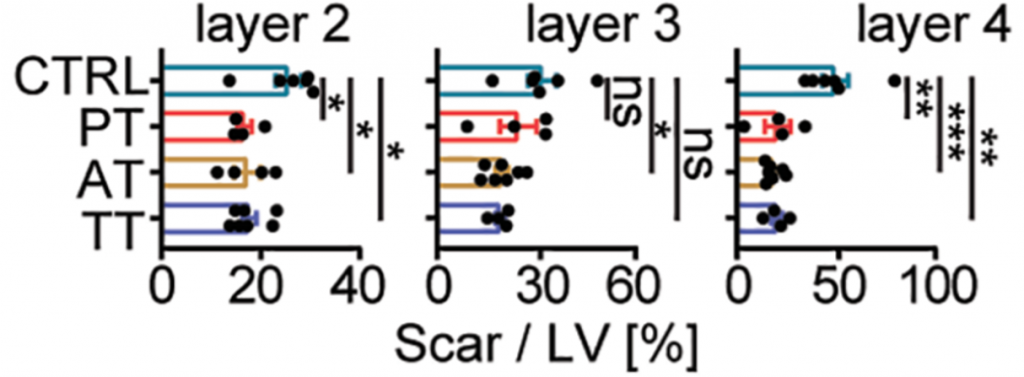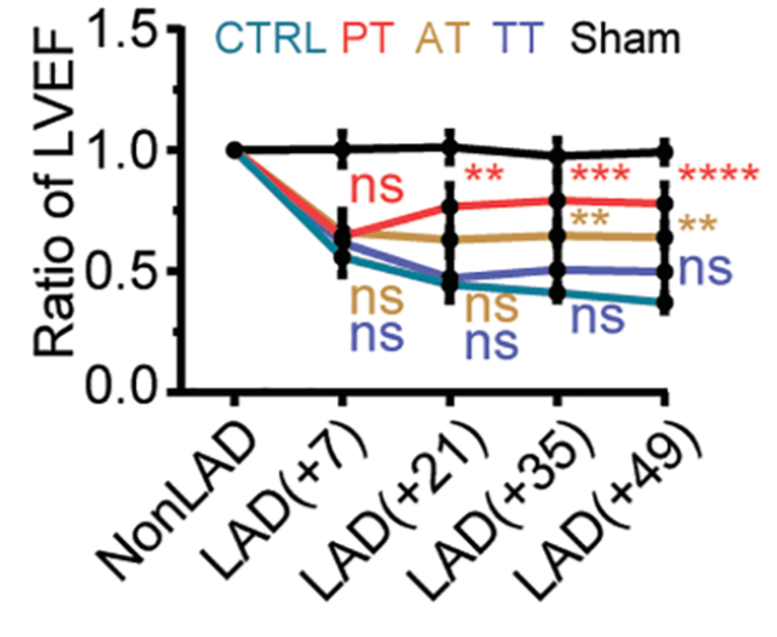Key Points:
- Genetic reprogramming via genetic modification reduces heart tissue damage following heart attack.
- Functional recovery of the heart is improved by reprogramming.
The muscle cells that allow our heart to pump blood — cardiomyocytes (CMs) — have little regenerative capacity, making it difficult for the heart to recover from injury or disease. However, scientists from the Max Planck Institute may have found a way to restore this regenerative capacity.
Chen and colleagues report in Science that reprogramming of CMs drives heart regeneration in mice after induction of heart attack. Following heart attack, the German researchers show that reprogramming reduces scarring, indicative of tissue damage. Additionally, reprogramming restores heart function weeks after heart attack, demonstrating improved recovery.
Cellular Reprogramming Restores Heart Function Following Heart Attack
Heart attacks (myocardial infarction) are caused by blockage of the arteries, depriving the heart of oxygen- and nutrient-rich blood, usually leading to irreversible tissue damage and heart dysfunction, if not death. To model a heart attack in mice, Chen and colleagues surgically blocked the main artery supplying blood to the heart. This ligation of the anterior descending artery (LAD) causes extensive heart tissue damage.
Partial cellular reprogramming involves activating genes (Yamanaka factors) that tell cells to become younger. To determine if this genetic reprogramming can prevent heart tissue damage, the researchers induced CM reprogramming in genetically modified mice with an antibiotic called doxycycline for 6 days before heart attack (pretreatment), for 1 day after heart attack (acute treatment), or for 6 days following heart attack (therapeutic treatment). In all three cases, reprogramming reduced heart damage, as measured by scarring.

During development, young CMs have more growth capacity to generate an adult heart. Thus, reprogramming restores this capacity, allowing for CM growth and regeneration of functional heart tissue and less scarring. To determine if reprogramming improves heart function, Chen and colleagues measured left ventricular ejection fraction — the volume of blood pumped from the heart per beat. They found that the “therapeutic treatment” did not improve heart function. However, pretreatment and acute treatment reprogramming restored heart function weeks after a heart attack.

Reversing The Effects of Aging with Genetic Reprogramming
The findings of Chen and colleagues suggest that reprogramming CMs can improve recovery from a heart attack. Not only this but the same technology could be used on other organs.
“Our study suggests therapeutic possibilities for achieving functional recovery of organs that fail to regenerate under normal conditions,” state the authors.
Indeed, partial cellular reprogramming has also been utilized to reverse the age of human skin cells by thirty years, cure blindness in aged mice, and rejuvenate mouse kidneys. It has also been shown to increase the lifespan of naturally aged and prematurely aged mice. Furthermore, it appears that epigenetic changes, which can be reversed by reprogramming, are a root cause of aging. Thus, if reprogramming can be tightly controlled to prevent, for example, tumor formation, it may be the true age-reversing technology of the future.